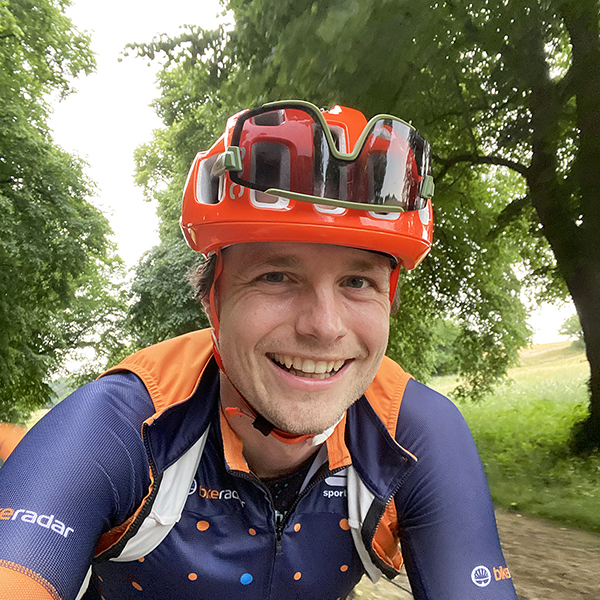Rouvy is growing to become one of the leading indoor cycling apps. Unlike the gamified experience of Zwift or MyWhoosh, it combines real-world video routes with virtual racing and structured training to offer a distinctive alternative in a crowded market.
Its growing profile is hard to miss – from sponsoring top-tier teams such as Lidl–Trek and Visma–Lease a Bike to hosting group rides with superstar riders such as Wout van Aert.
The brand has also been on something of a spending spree, acquiring Fulgaz in early 2025, followed by the acquisition and subsequent merger of former hardware manufacturer turned indoor training platform, Bkool, in July.
This rise comes amid a continued boom in indoor cycling, driven both by riders looking to escape bad weather and by the growing accessibility of smart trainers, power meters and connected devices that make riding indoors more immersive and engaging.
You can learn more about what’s involved and the benefits of indoor training in our beginner’s guide to indoor cycling.
If you’re curious about what makes Rouvy stand out – and whether it’s the right app for your setup – this guide breaks down its key features and what sets it apart from the competition.
What is Rouvy?
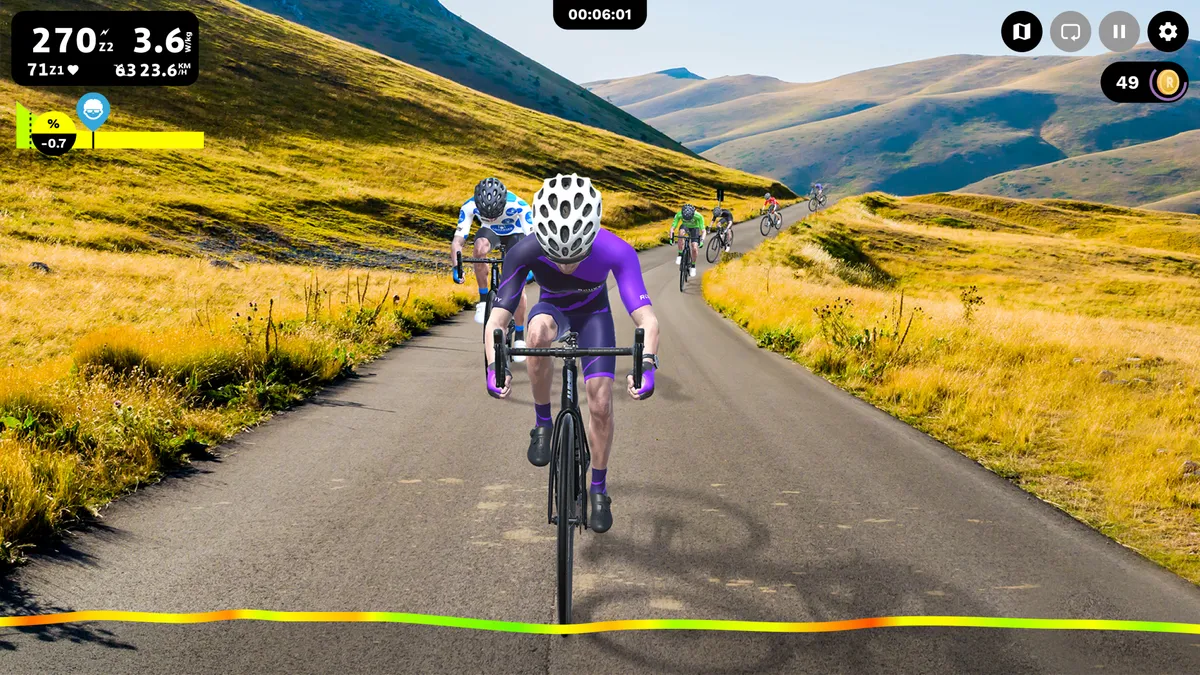
Rouvy is an indoor cycling app that offers a range of real-life routes and augmented-reality courses for you to ride on.
Unlike other apps such as Zwift and MyWhoosh, which simulate virtual worlds or offer simulations of real roads, Rouvy uses video recordings of real roads and combines them with elevation data.
That includes routes created by users, with the Rouvy Route Creator enabling anyone with a suitable POV recording and GPX trace to create an augmented-reality version of their local roads or a dream climb.
Rouvy’s library of routes is constantly expanding.
Recent updates have added courses from across the globe, including routes in Rwanda from the recent World Championships, as well as popular European training destinations such as Calpe, Andorra and Girona.
These frequent additions help ensure there’s always something new to explore, whether you’re after a scenic endurance ride or a classic mountain ascent.

Rouvy has also acquired FulGaz, giving access to the top 20 most popular FulGaz routes, including Ironman and Ironman 70.3 races.
On these, as well as an avatar of yourself, the animated riders can either be virtual partners of your previous records, ghosts for you to race against or other real-life Rouvy users. You can switch the lot off if you prefer to ride alone.
Whereas before you only got a view of the road ahead, On Omnimode routes, Rouvy now enables you to spin your perspective around to admire the view, see where you’ve been and keep an eye on who’s coming up behind you.
Here, you just see a video of the route, which speeds up or slows down as you do, with the app changing the resistance to reflect the gradient, but there are no avatars shown.

Rouvy has also introduced 'corner braking', which improves realism by adjusting your speed when entering and exiting a corner for a more authentic riding experience.
Aside from simply riding courses, Rouvy also hosts races, has a library of 291 official workouts and even offers the chance to win prizes, including a free subscription, for completing in-game challenges.
How does Rouvy differ from other indoor cycling apps?
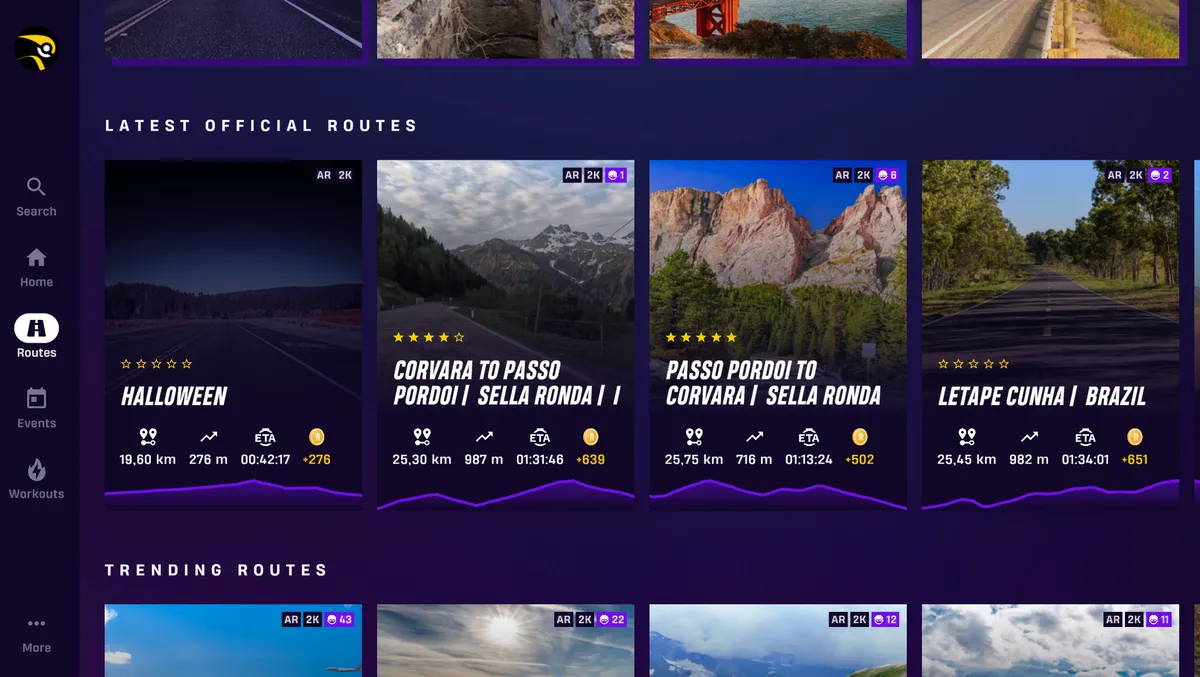
While Zwift has built its own virtual worlds, some completely made up from scratch and some based on real-life places, Rouvy sets itself apart by using video footage of the roads it simulates and by having a massive library of routes to choose from.
If your goal is to train specifically on real roads, perhaps for a future sportive or gran fondo (or just for the thrill of riding some of the sport’s most legendary roads), Rouvy could offer a real advantage.
How much does Rouvy cost?

When signing up for an account, Rouvy offers new users a 14-day trial with full access to its feature set.
From there, the monthly price for a Rouvy subscription is comparable to its competitors at £17.99 / $19.99 per month and you can register up to five hardware devices on which you run the Rouvy app.
You also have the option of sharing a Duo subscription with family or friends for £29.99 / $26.99 per month, or as a group of up to five riders for £53.99 / $59.99.
In all cases, an annual plan works out cheaper.
A subscription gives you access to Rouvy’s collection of augmented routes, other virtual routes and its library of structured workouts and training plans.
| Per month | Per year | |
|---|---|---|
| Single | £17.99 / $19.99 | £159.99 / $179.99 |
| Duo | £26.99 / $29.99 | £229.99 / $249.99 |
| Group | £53.99 / $59.99 | £449.99 / $499.99 |
What do you need to use Rouvy?
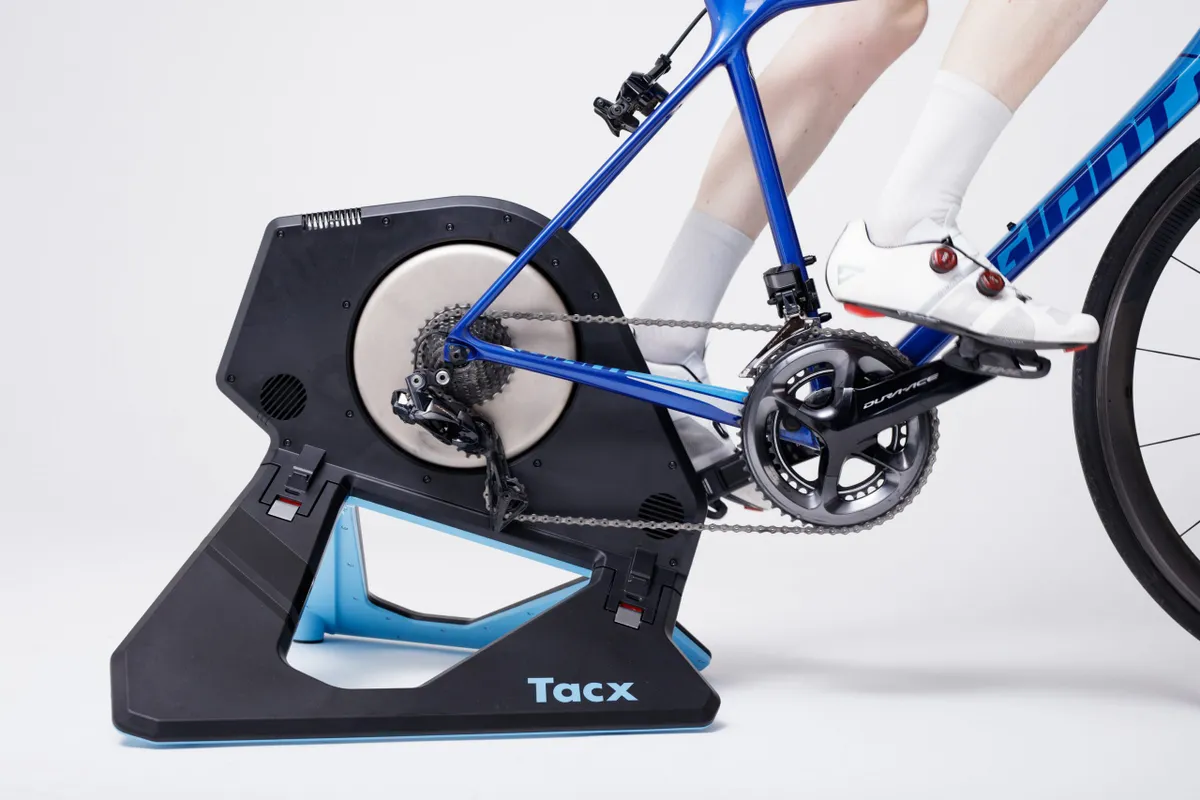
You’ll need a device to run the app on, an indoor smart bike or a bike plus an indoor trainer (preferably a smart trainer) or rollers, and something to measure your power or speed.
The Rouvy app itself is available for Mac/Windows PCs, Android/iOS smartphones and tablets, and Apple TV.
As with other indoor cycling apps, you’ll get the most immersive experience if you have access to a smart indoor bike or smart trainer in your pain cave.
Rouvy can control the resistance of the trainer or indoor bike to match the profile of the course or the intensity of an interval session.
So, for example, if you’re riding the Passo Gavia (which is an option in Rouvy), the app can make your trainer simulate the resistance you would feel if you were climbing it in the real world.

Rouvy recently added virtual shifting hardware compatibility to the platform. The chain doesn't move with virtual shifting, but the app simulates gear changes electronically, adjusting resistance and cadence to match the selected gear.
It’s possible to use Rouvy without a smart trainer, though. If you have a classic ‘dumb’ turbo trainer or rollers and a power meter, Rouvy can use the data from the power meter to accurately follow the video of the route and drive you forward in the game.
A full list of compatible trainers can be found on Rouvy’s website.
How do I progress on Rouvy?

Some say gamification is the future of indoor cycling, and Rouvy now supports progression levels, much like Zwift, in a process it calls your Rouvy Career.
You gain Experience Points as you ride; once you’ve earned the target for your level, you’ll automatically level up. At the same time, you earn Coins, which, similarly to Zwift, you can use to customise your avatar.
Rouvy starts off with a calibration phase to work out what you’re capable of before it starts to track your Rouvy Career progression.
Within each of the nine levels, which range from Starter to Legend, there are a series of sub-levels, so there are 80 levels in total. Level up and you get a new virtual badge and (unspecified) prizes from Rouvy’s partners.
Rouvy also enables you track your progression over time and see where you fit with the rate of progress of its other users.
The latest update introduces timed segments. Similar to segments on Strava, these focus on specific sections of a course, with your performance and times ranked against other riders.
Each segment comes with visual indicators showing your previous best effort, your friends’ top rides, and the current leader’s pace.
What courses are there on Rouvy?
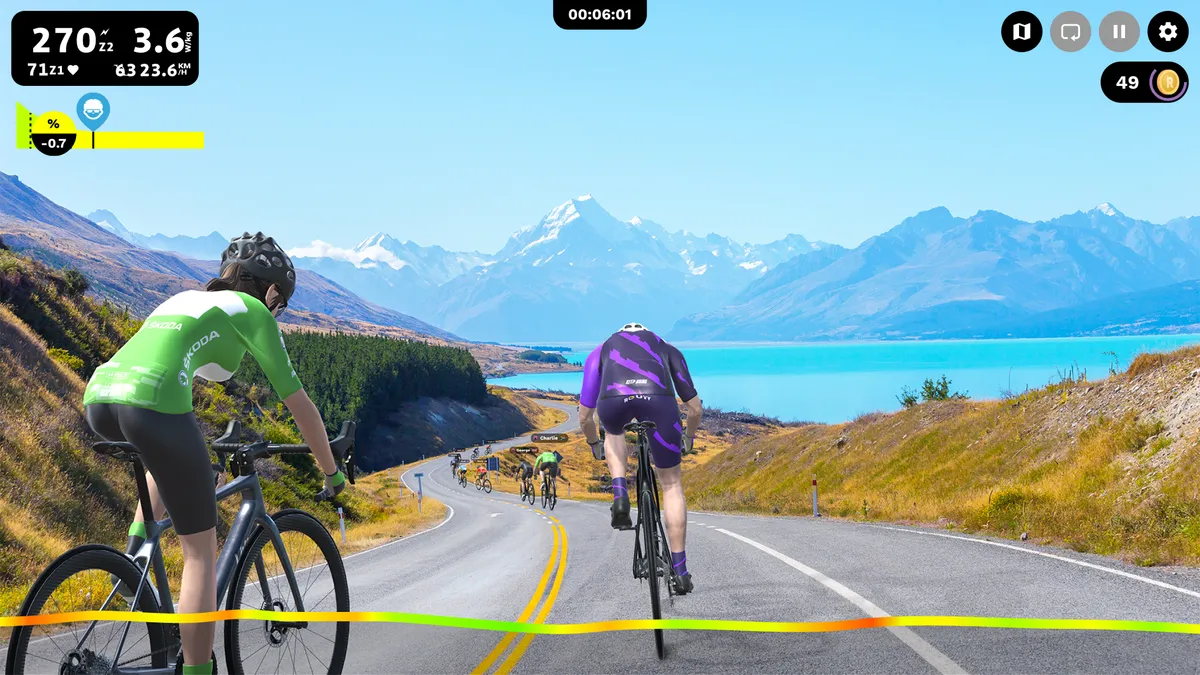
There are more than 1,300 routes that support the augmented reality feature. These include iconic climbs from Italy and France such as Mont Ventoux and the Passo dello Stelvio, as well as sections of famous sportives such as the Fred Whitton (which takes place in the Lake District in the UK).
Rouvy includes a search function that enables you to find routes that match your criteria for where you want to ride.
Beyond augmented-reality courses, there are thousands of standard, point-of-view video routes to ride, with categories including the Alps, the Pyrenees and mountain bike trails.
As we’ve already mentioned, Rouvy’s route catalogue suggests there’s currently a total of 245,697km worth of video routes available in the game, which is a little mind-boggling.
While Rouvy used to allow users to upload their own ride videos and create custom routes to add to the app’s library, it has now closed that option.
Does Rouvy offer structured training and workouts?
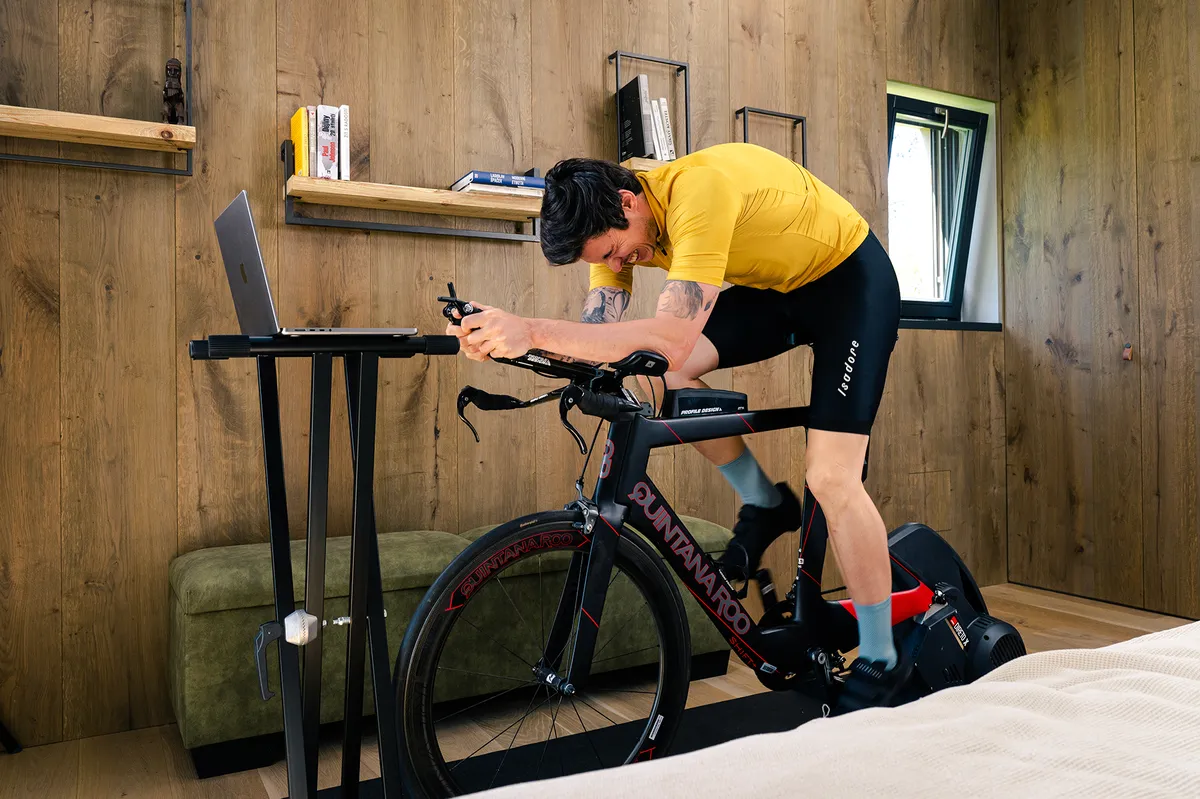
According to Rouvy, there are 291 official workouts available on the app.
Some have been created by professional coaches such as Hunter Allen or companies such as TrainingPeaks and CycleOps, but there are many created by Rouvy users, too.
If none of them are suitable, or you just can’t find the right one, you can also build your own interval-based workouts, if that’s more your cup of tea.

The 'Create Workout' section enables you to design your indoor training sessions around your training goals for better success.
The workouts with the richest feature set are the Rouvy training plans, where video, power-based intervals and motivational quotes combine to help you get a good workout.
The rest of the workouts simply guide you through intervals in a similar manner to apps such as TrainerRoad. This isn’t necessarily a bad thing; sometimes simplicity can enable you to focus entirely on your workout.
If you’re looking to follow a longer-term structured training plan on Rouvy, the app points you to TrainingPeaks, with Rouvy supporting synchronisation between the two apps.

Rouvy also enables you to delve deep into your riding statistics, including distance, elevation, finished races and completed routes across the last week, month or all time.
Can I join a group ride or race on Rouvy?
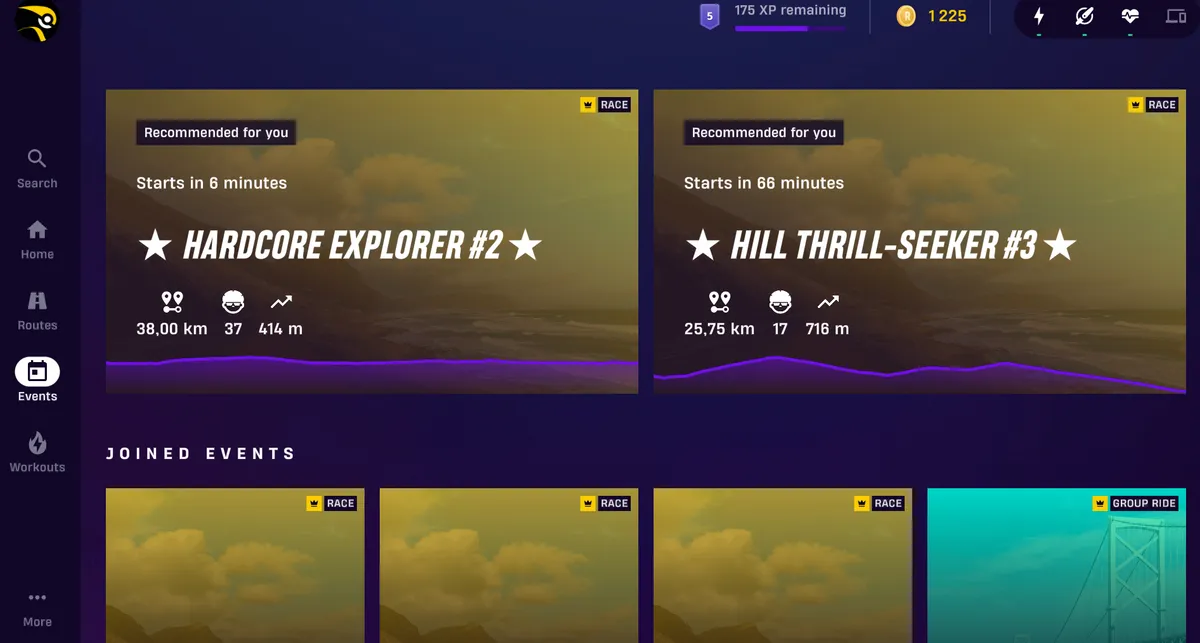
There are around 100 official events on Rouvy every week, with approximately 600 total events weekly throughout the year, according to the app. This number balloons to around 150 official events and 1,800 total events per week in the winter months.
Rouvy says its monthly Big Rouvy Races, which take place on the first Sunday of each month, regularly attract thousands of participants, although perhaps unsurprisingly, its biggest ever event saw 6,500 riders line up toe-to-toe with special guest, Wout van Aert.
To take part in official Rouvy races, you’ll need to use a smart trainer, but there are other events that are open to users with all types of trainer.
Via the ‘Set up your ride’ menu, you can pick any rider or a friend who has ridden it previously to ride or compete with them.
Rouvy added more sophisticated physics simulation in recent years, which supports both drafting, and weight and height simulations, so that larger riders have to push more than smaller riders to keep up the same speed, both on the flat and on climbs.
Any rider can lower their effort level by drafting another, though, unless they’ve set their ride up in time-trial mode.
If the pace is too easy or difficult for you to stay with the group, you can adjust the ‘reality level’ in the settings menu to adjust the difficulty of the course profile.
You can also interact with other riders using enhanced social features including comments and reactions, such as 'kudos', 'take a pull' and 'follow me'.
However, these can be turned off if you're more of an introverted indoor cyclist.


